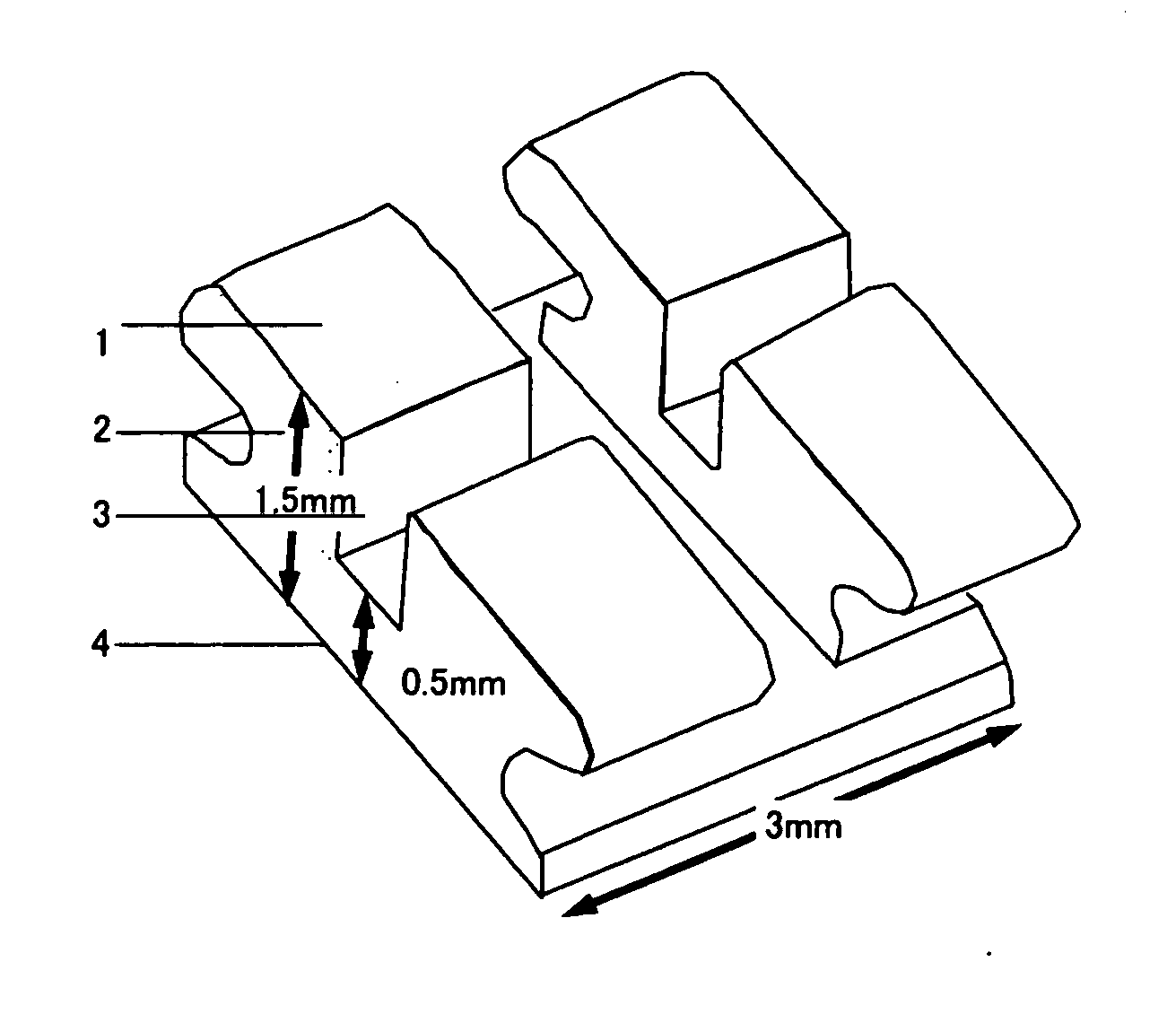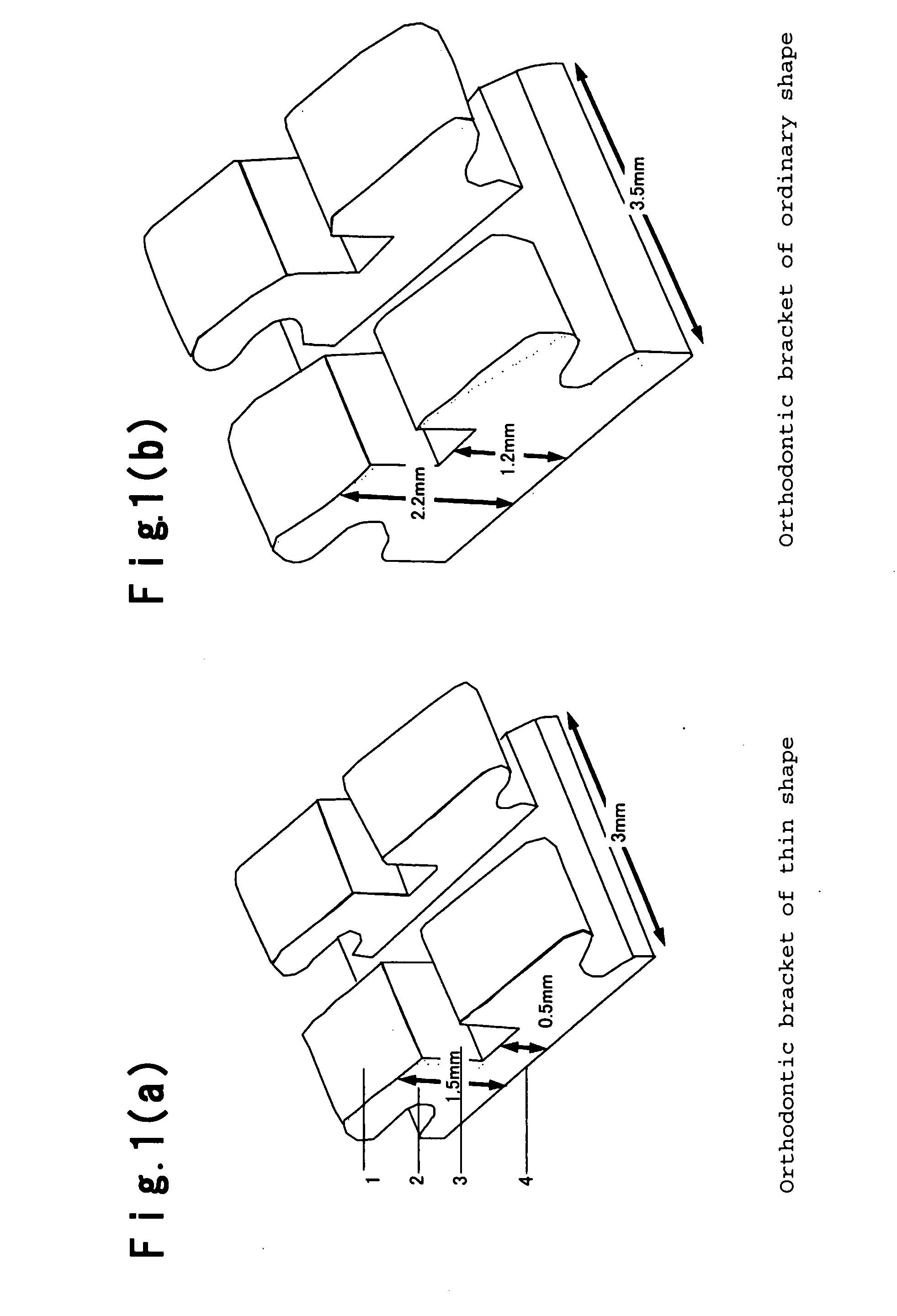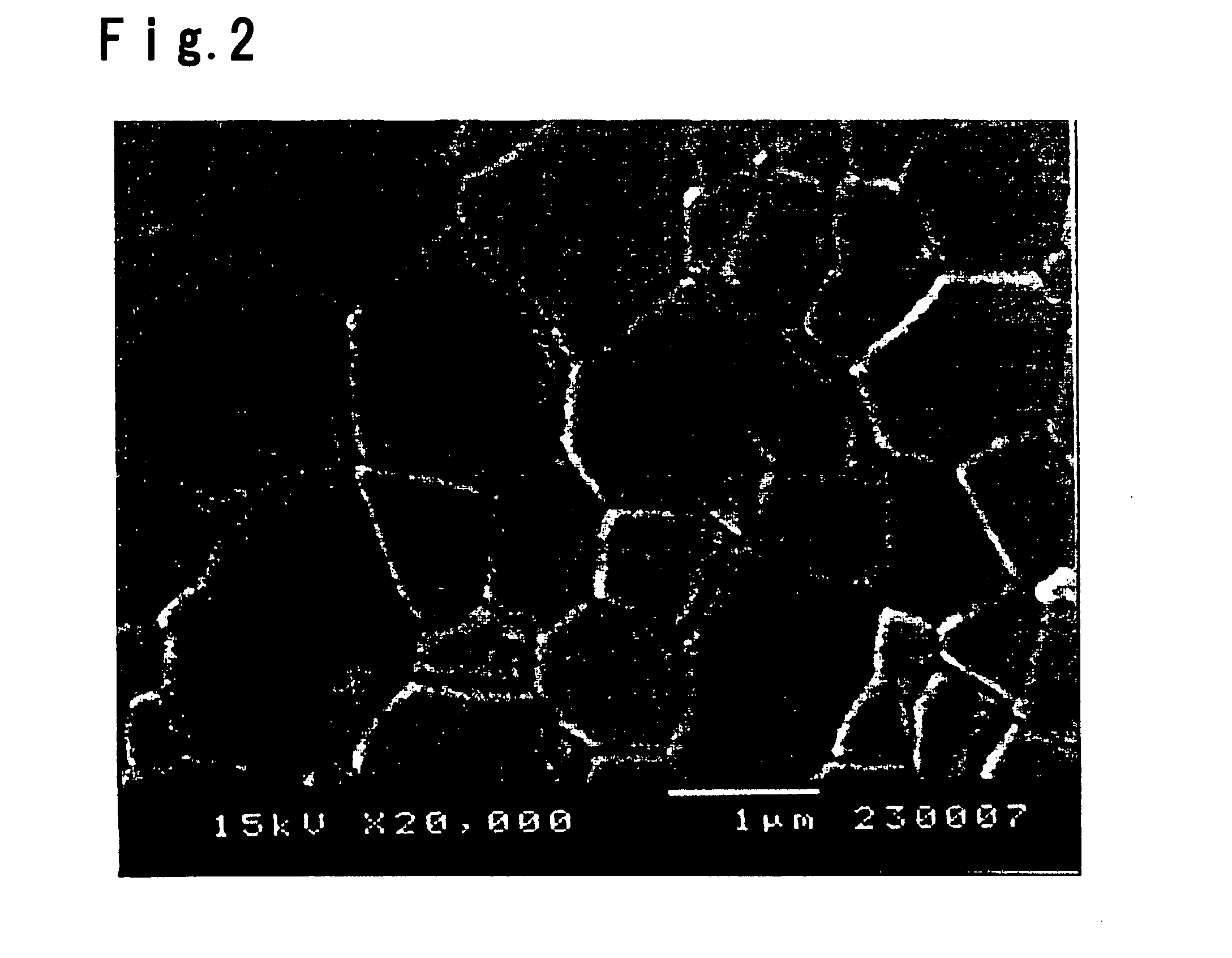Orthodontic Bracket and Process for Producing the Same
- Summary
- Abstract
- Description
- Claims
- Application Information
AI Technical Summary
Benefits of technology
Problems solved by technology
Method used
Image
Examples
example 1
[0050] A highly-pure alumina fine powder with a purity of 99.99% and a specific surface area of 14 m2 / g was molded into a plate shape by means of a die press and a rubber press. It was placed in an electric furnace and maintained at a predetermined temperature in the air for a predetermined period to obtain a primary sintered body. It was subjected to measurements of a density of a sintered body and an average crystal grain size. Table 1 shows the results.
[0051] Then the primary sintered body thus obtained was placed in an HIP apparatus, an argon gas was introduced thereinto, and the sintered body was treated at a predetermined temperature and pressure. Then each sample thus obtained was subjected to measurements of a density of the sintered body, an average crystal grain size, an average bending strength, an absorption / scattering coefficient and a spectral reflectance factor. Table 2 shows the results. FIG. 2 shows a scanning electron micrograph used for determining the average cr...
example 2
[0053] 100 g of a wax-type thermoplastic resin was added to 500 g of the raw material powder used in Example 1 and they were kneaded with a heated kneader to prepare a compound. The compound was extruded by means of an injection molding apparatus and molded into a plate shape. The molded body was heated to 900° C. to debind, and then sintered at 1,250° C. in the air for 5 hours. The sintered body was placed in an HIP apparatus, an argon gas was introduced thereinto, and the sintered body was treated by two-step retention at predetermined temperatures and pressures. Namely, the first step treatment was carried out for each sample at a temperature, pressure and period as shown in the first step in Table 5 and then the second step treatment was carried out for each sample at a temperature, pressure and period as shown in the second step. Each of samples thus obtained was subjected to measurements of a density of the sintered body, an average crystal grain size, an average bending stren...
example 3
[0054] 100 g of a wax type thermoplastic resin was added to 500 g of the raw material powder used in Example 1 and they were kneaded by means of a heated kneader to obtain a compound. The compound was extruded by means of an injection molding apparatus and molded into the ordinary bracket shape as shown in FIG. 1. The molded body was heated to 900° C. to debind, and then sintered at 1,275° C. in the air for 1 hour. The sintered body was placed in an HIP apparatus, an argon gas was introduced thereinto, and the sintered body was treated at a predetermined temperature and pressure according to two-step schedule. Specifically, as shown in Table 6, the HIP treatment was carried out for each sample in the same conditions as in one of Sample Nos. 3, 4 and 5 in Table 5. The brackets thus obtained showed the translucency equivalent to that of the samples in Example 2. An average fracture moment was measured for each of the brackets. Table 6 shows the results.
[0055] A fracture moment was ca...
PUM
| Property | Measurement | Unit |
|---|---|---|
| Grain size | aaaaa | aaaaa |
| Temperature | aaaaa | aaaaa |
| Temperature | aaaaa | aaaaa |
Abstract
Description
Claims
Application Information
 Login to View More
Login to View More - R&D
- Intellectual Property
- Life Sciences
- Materials
- Tech Scout
- Unparalleled Data Quality
- Higher Quality Content
- 60% Fewer Hallucinations
Browse by: Latest US Patents, China's latest patents, Technical Efficacy Thesaurus, Application Domain, Technology Topic, Popular Technical Reports.
© 2025 PatSnap. All rights reserved.Legal|Privacy policy|Modern Slavery Act Transparency Statement|Sitemap|About US| Contact US: help@patsnap.com



